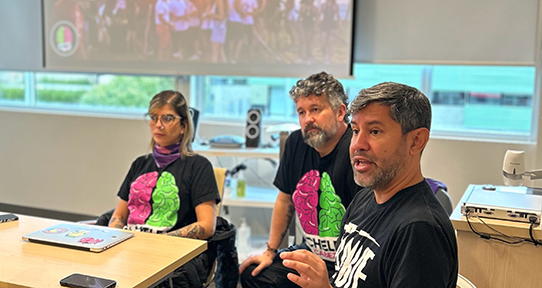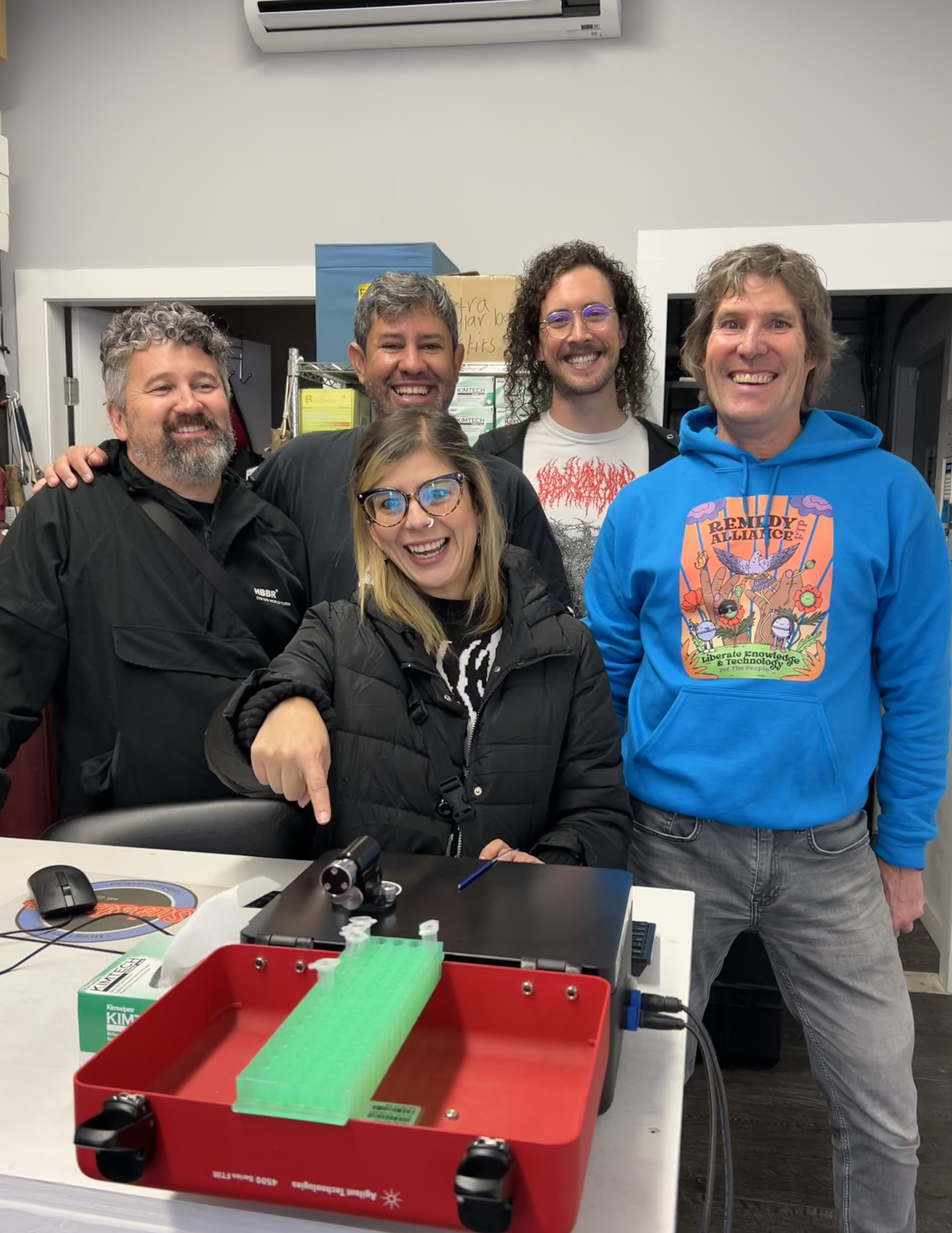Harm Reduction Without Borders: Collaboration across the Americas

What does harm reduction look like in a Colombian context? Julian Quintero and Vanessa Morris, co-directors of the Colombian non-profit Acción Técnica Social (ATS), met with Canadian Institute for Substance Use Research (CISUR) researchers in October 2024 to share their perspectives on the state of harm reduction in Colombia and emerging trends from the country.
ATS runs a wide range of harm-reduction programs including drug checking, supervised consumption sites, and policy advocacy, and are hosting the Harm Reduction International Conference in Bogota, Colombia, April 27-30. For this research presentation, they mostly focussed on a recent trend in Colombia—the rise of “tusi,” also known as pink cocaine. The pioneered-in-Colombia drug mixture usually includes MDMA, ketamine, caffeine and cocaine, but can also include myriad other substances, including, increasingly, benzodiazepines.
Days after the presentation, “pink cocaine” made international headlines when it was reportedly found on the premises where former One Direction singer Liam Payne died. Tusi has been showing up more in the local drug checking programs in BC. This emphasizes the need to continue to have an open dialogue between drug countries on both sides of the drug market.
Sharing experiences and strategies
During their trip to Canada, Quintero and Morris visited harm reduction sites in Vancouver and Victoria to see what strategies BC is employing to combat the toxic drug crisis that has ravaged the province since 2016. While the drug markets may be different here than in Colombia—fentanyl has yet to hit the country the way it has in North America—they still feel there is a lot to be learned from the BC model. They say that that the combination of current government support and a community-based, grassroots approach has made BC a unique place in the world.
“We’ve been to Europe, we’ve been to the US and we have seen nothing like the Canadian aspect of community projects, of peer support work and innovation," says Quintero. "That is not seen in other places. So congratulations on doing that.”
Quintero and Morris’ visit to BC is part of a research exchange program led by Dr. Jaime Arredondo, Canada Research Chair in Substance Use and Health Policy Research. Arredondo, also an assistant professor in Public Health and Social Policy and scientist with CISUR, has organized similar visits with delegates from Mexico, Peru and even the US State Department to visit BC harm-reduction sites to see how things are done. He acts as tour guide, interpreter, and ambassador for these trips, hoping that both host and visiting countries can learn from each others’ experiences.
“I believe these knowledge exchanges provide a unique opportunity to share evidence-based practices among actors facing common challenges,” Arredondo says. “The collaboration between CISUR and agencies like ATS, or Mexico’s Verter and Prevencasa, has shown that Canadian strategies for improving lives and preventing overdoses among people who use drugs can be effective even in low-resource settings. These lessons can then be applied in British Columbia by comparing models through rigorous research.”
Arredondo adds that a team from the Cambie, ATS’s supervised consumption site in Bogota, recently had a similar research exchange in Baja California. “These knowledge exchanges have allowed not only a north-south sharing, but also south-south—all adapting models from BC.”
A need for new technology

One particular area of interest for Morris and Quintero is drug-checking technologies. While their organization offers drug-checking at hundreds of events every year in Colombia, they are limited to testing strips and other lower-tech solutions for on-site testing, and have to rely on third parties for chemical analysis of samples. This can take weeks or months, as opposed to getting results within minutes if they had their own equipment.
“We don't have that same context of fentanyl over there, but people are still dying at the parties,” says Morris. “We realize we need access to these technologies.”
The hope is that they can roll out some of the innovations they have seen on this trip—enhanced drug checking, safer inhalation sites, trained peer workers and support services for things like housing—at a new harm reduction hub ATS is slated to open sometime this year. They also hope the BC and Canadian approaches will be highlighted at the Harm Reduction International Conference in April.
“The Canadian model, the Vancouver model, the Victoria model, it has to have a representation at the table,” says Morris. “So other people around the world notice what is happening here.”
Pablo Gonzalez is a Masters student in the Social Dimensions of Health program at UVic and technician at the Substance drug checking project. He’s worked in harm reduction in Canada and Latin America and has participated in several of the research exchanges, which he says are vitally important.
“As many of the illicit substances that are consumed in Canada are produced in Latin America, Canadian-based researchers, not only have a moral imperative to enable such exchanges, but can greatly benefit from knowledge sharing,” he says.
Gonzales will be attending the April conference in Bogota to present on his drug-checking research, which includes a recent publication on the volatile illicit drug supply in BC. “We must strive to maintain those relationships of collaboration if we intend to stay on top of the international drug supply that affects our communities in very similar ways,” he says. “Students and young researchers, like myself, play a crucial role in sustaining these alliances, as we represent the future of drug policy and harm reduction services.”
Peer to peer
One of the key things that has stood out for Quintero and Morris about the approach they have seen here is the involvement of peers in designing and providing harm-reduction services, which Quintero feels will ensure these life-saving measures stand the test of time.
“When governments change, the empowerment of the people is still there, the ones who make sure that programs still are in place. Politicians come and go, but people who use drugs are the ones that remain.”
-Julian Quintero
-by Amanda Farrell-Low
